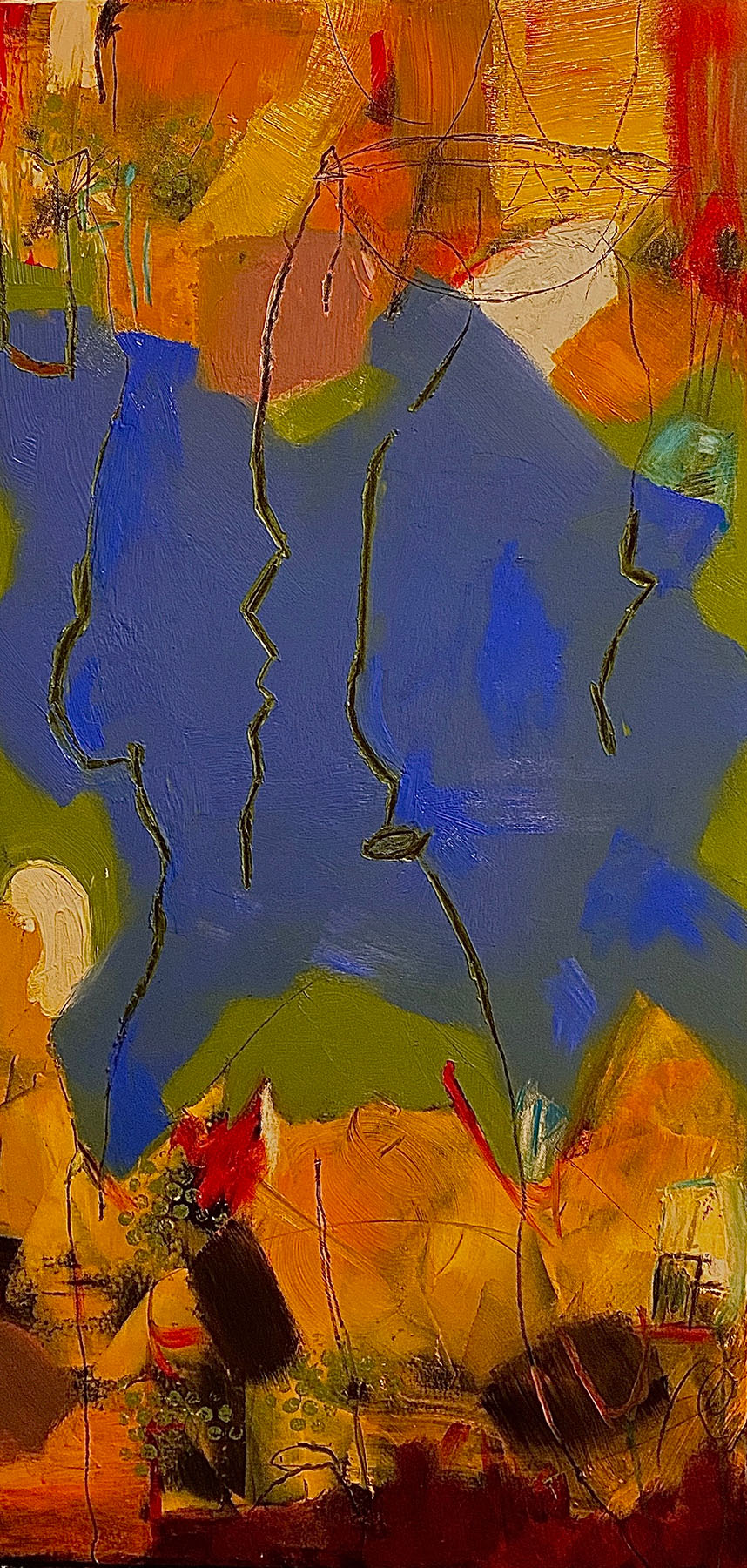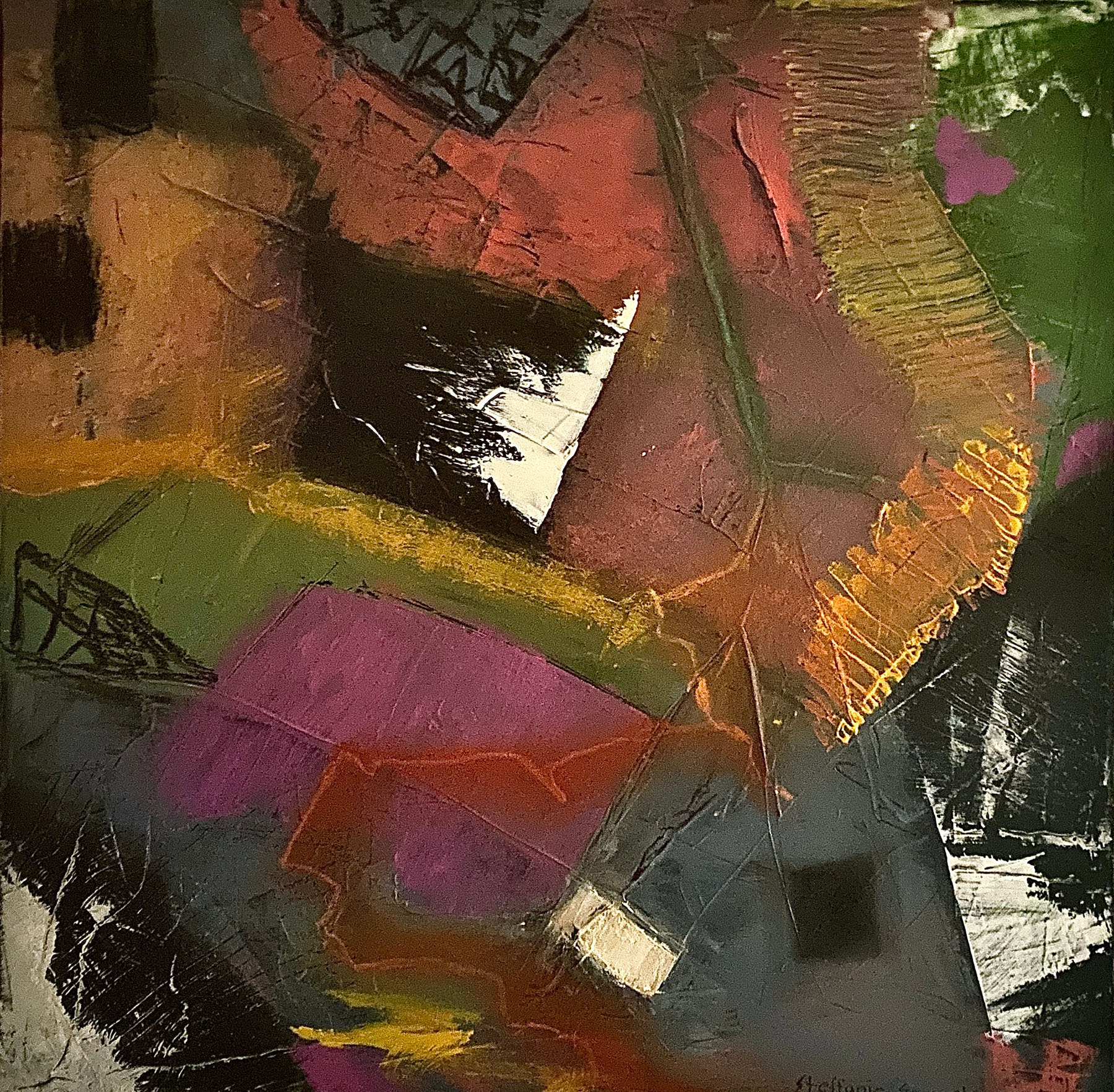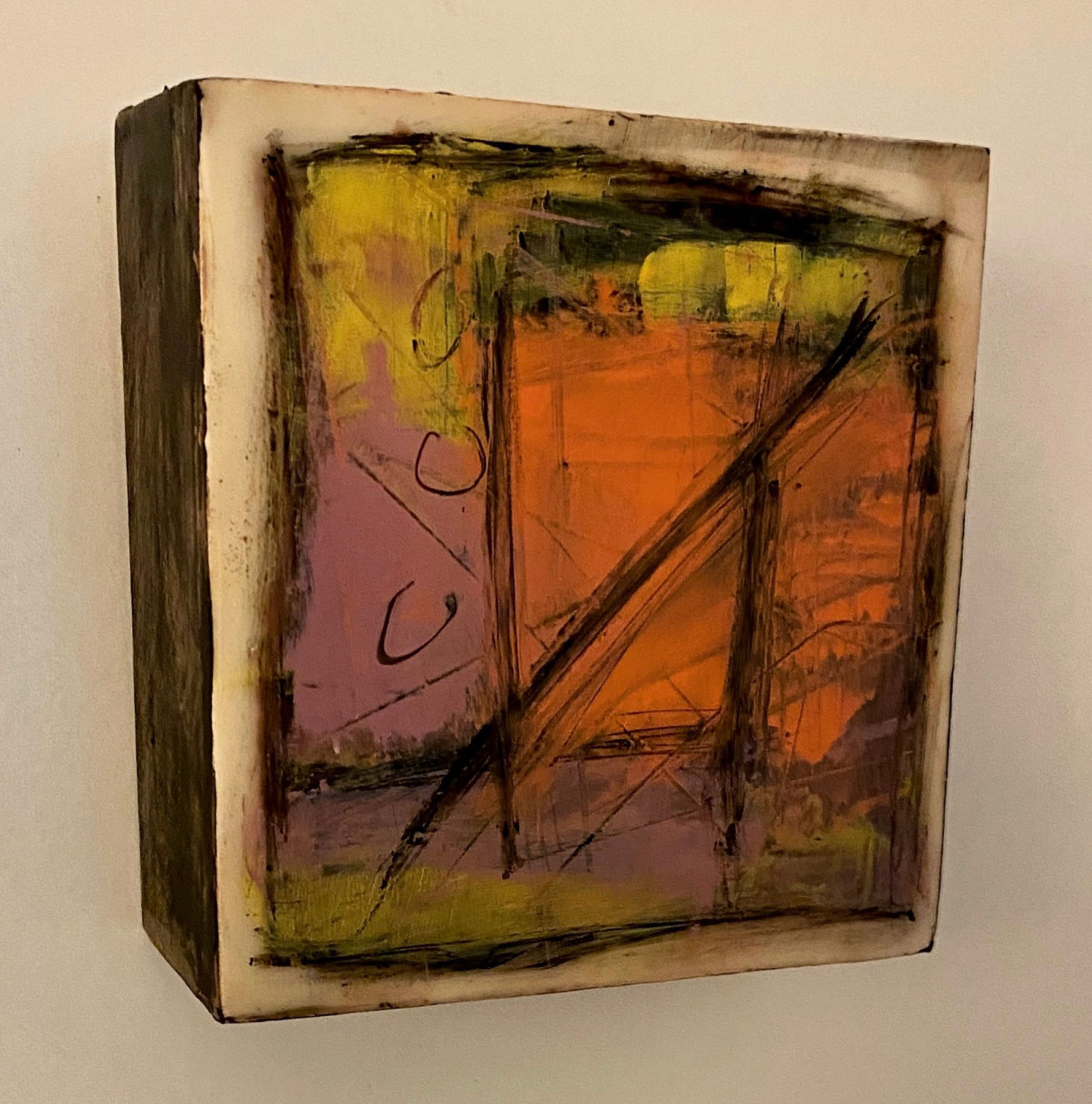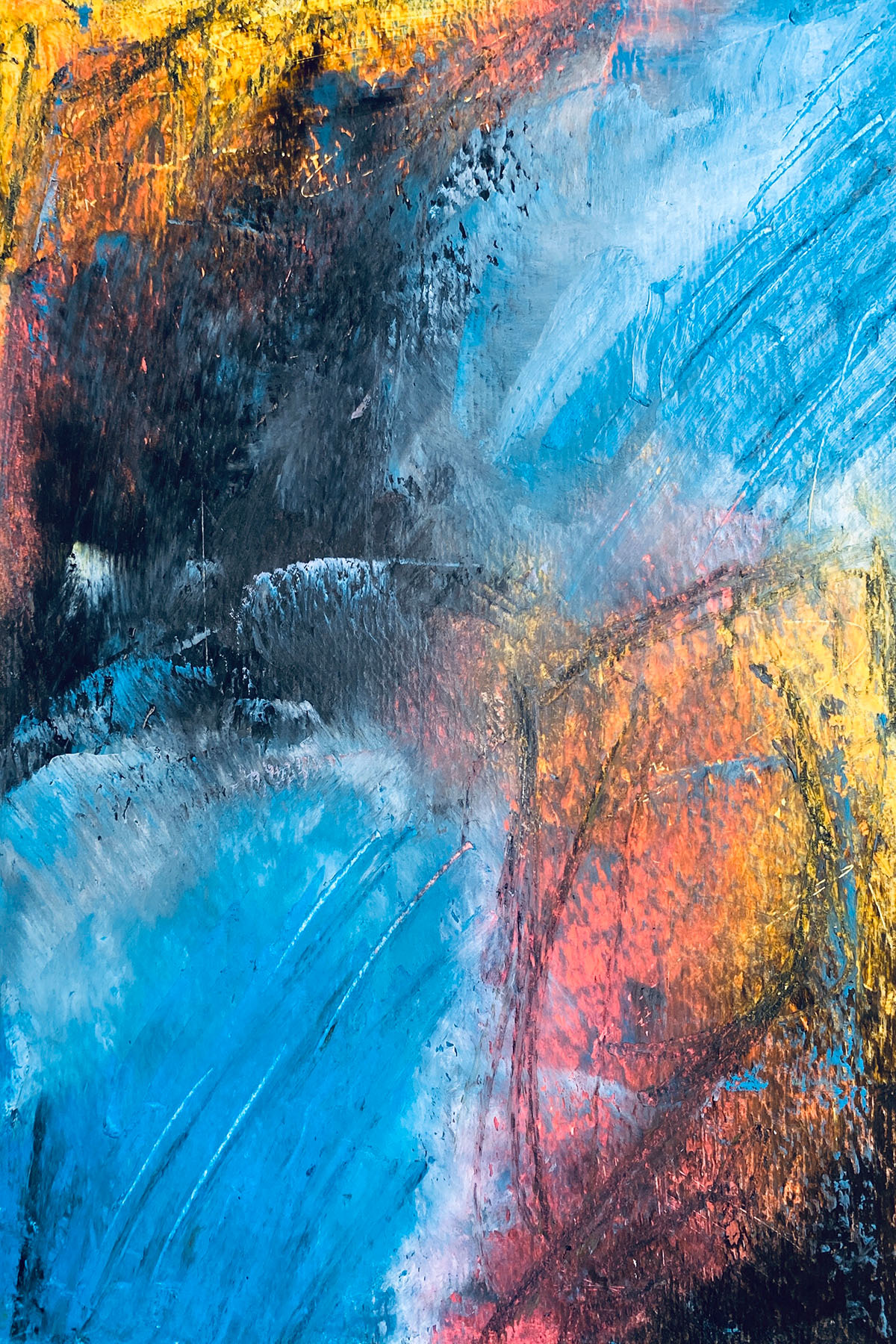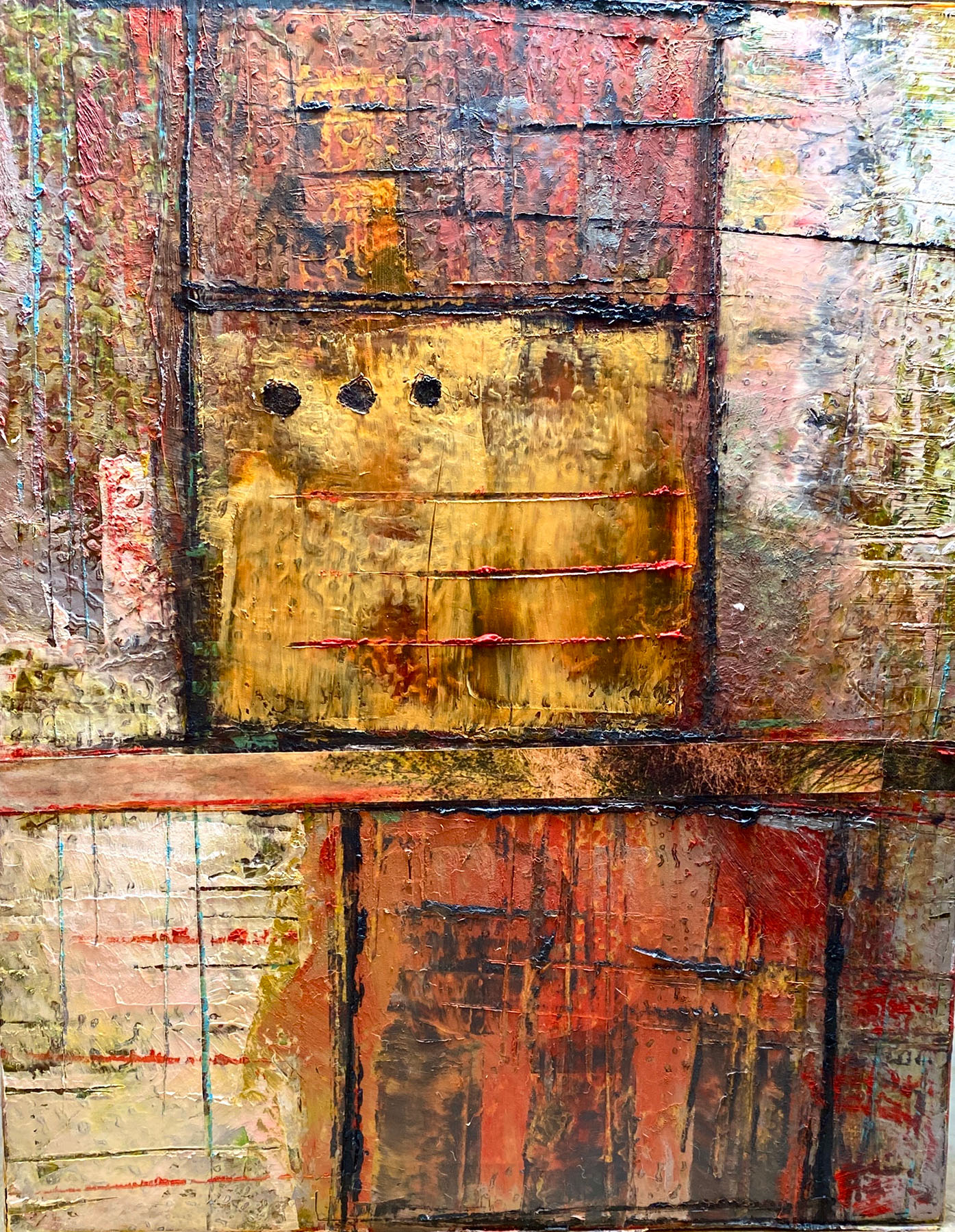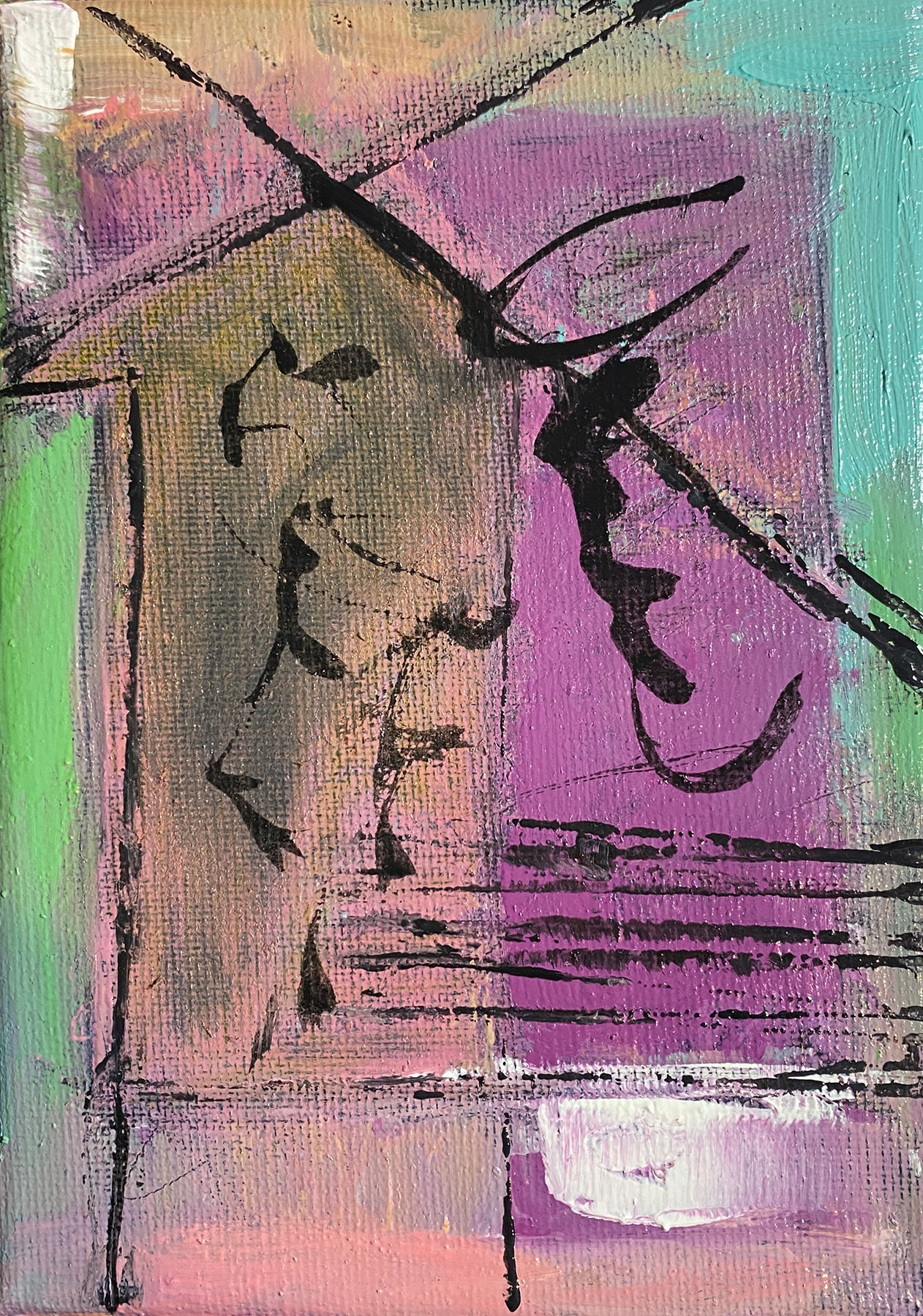Paintings
Click on an image to view it larger or in a slideshow. Please contact me if you are interested in purchasing my original artwork. Prices are available on request. Commissions are accepted.
“Pushing Back”
Cold Wax and Oil Paint
18” x 36”
Pushing Back refers to standing up to this administration’s policies of social injustice, unlawful immigration and environmental | scientific misinformation if not complete deletion.
“Terrain”
Oil Paint, Japanese Paper, Sand, Cold wax, Charcoal
24” x 35”
Climates in the West are unpredictable ranging from drought to downpours to tornadoes. These are due to environmental impact.
“Red Moon Dance”
SOLD
Oil Paint, Sycamore Bark, Japanese Paper
29”h x 19”w x 2”d
This piece represents the spirituality and reverence that indigenous people have towards nature and the role it plays in life.
“Shadow Tree Walking”
Oil paint, oil pastels, graphite and Carand’ache on archival paper
21”h x 18”w frame
“Fire Sky”
SOLD
Crain Communications Permanent Collection
Oil and graphite on canvas
24″ x 30″ x 2″
When forest fires are raging they have a negative impact on air quality throughout borders, i.e. Canada’s 2023 fires polluting many states. They also leave people homeless and decimate our old growth forests in which life is dependent upon for the quality of the environment.
“Crabs in the Amazon”
SOLD
Oil on wood
12.5″ x 12.5″ x 1″
Indigenous Peoples hunt for crab in the Mangroves to eat and sell in the Amazon basin. Their availability is decreasing due to deforestation for farmland to plant crops.
“Spirit Tree”
Oil Paint and other Media on Board
36″ x 24″
Spirit Tree came from a dream I had one night. to me it represents Indigenous Peoples knowledge and relationship to nature; lessons to be taught and followed.
“Industry Versus Nature”
Oil Paint, Carand’ache Crayons, Graphite Pencil and Oil Pastels on Aluminum Panel
14″ x 11″ x 3″ Floating
“Oh, You Crazy Weather!”
SOLD
Oil on aluminum
14” x 11”
Climate change has had quite an effect globally on the weather in 2023. What shall we see in 2024?
“Super-Fracking”
Oil, ink pencil on canvas
27” x 27”
Horizontal super-fracking has become huge in Texas as a way to mine for gas and oil. These drills dig far into the earth reaching into the earth’s largest freshwater aqueduct. One of the machines brings up millions of gallons of fresh water, mixes it with chemicals and other gritty materials. The linear tubes then forces the dirty water down with intense pressure to fracture the earth below the aqueduct. The chemical water is then contained in tanks.
“Heat, Fire and Floods, Oh My!”
SOLD
Oil paint on linen canvas
18” x 18″
This is the visual equivalent of the consequences of climate change. All is happening at once and the and the physical harm to nature and infrastructure is obvious. However, we must also include societies mental health and our ability to cope when lives, houses and financial incomes are changed or lost.
“Greenland’s Mountain Glaciers”, 1978-2022
Oils and inks on canvas
26” x 26”
Greenland’s coastal glaciers and ice shelves are becoming destabilized and melting faster than they were just decades ago. While not in direct connection with Greenland’s larger ice sheet, they have twice as fast retreated between 2000 and 2021 as they did before the turn of the century due to climate change. Two studies reveal an ominous sign for global sea rising.
“What We Don’t See Below”
Oil on linen canvas
18” x 18”
Marine life is fading due to the rising temperature of water. Coral reefs are bleaching, species of plants, fish and mammals are consistently declining. The shorelines of Lake Michigan and Lake Superior are vastly receding due to the rising water levels.
“Weather Over Water”
Oil paint/cold wax
16” x 16″
This piece represents climate change in the melting of the glaciers and rising of sea, lakes, and river levels. It also shows the damage of plant and coral life that disrupts the natural feeding structures of fish, and other aquatic species plus the erosion of the Great Lakes shorelines.
“Nebulous”
SOLD
Oil paint mixed with pumice, cold wax, oil pastels, paper
30” x 24”
“Nebulous” Is a painting in multiple layers of a gaseous cloud. It was inspired by the train wreck in Ohio where dangerous chemicals were released into the environment causing harm to people, animals, nature and air quality.
“Turbulence”
Oil paint, ink, cloth
18″ × 18″
“Turbulence” is a piece about the ongoing impact of climate change. It reflects the fishing industries practices of netting that kills numerous underwater species while catching lobsters and other fish. There are safe ways to execute this and get better results but the industry are not willing to change their practices. They endanger the right whales as well as other species already on the endangered list.
“Home”
SOLD
Oil paint with cold wax, paper
18” x 16”
Winter winds blow harsher now than ever before. You are safe and warm in your shelter.
“As the Land and Water Fall”
SOLD
Oil paint on paper
24” x 20”
As the Land and Water Fall reveals the destruction left in the path of the most recent international earthquakes, mudslides and floods. 5000 lives were lost in just one of the occurrences.
“Windows of a Broken Planet”
SOLD
Oil paint mixed with fibers on canvas
20” x 16″
Heat and desert emanate from the yellow ochre and deep red colors and fibers painted into the canvas.
“The Warming of the Planet”
SOLD
Oil paint, graphite, oil pastels
24″ x 20″
Heatwaves have started to become the new normal in many parts of the U.S. and globally. It has caused many deaths and has put a great strain on electrical infrastructure globally.
“Intersection”
SOLD
Oil paint with cold wax, charcoal on wooden block
3.5” x 3.5″
“Intersection” represents the plastic and other garbage washed up on the beaches of the Great Lakes. I have witnessed dead fish and birds that got entangled in wire and fishing lines.
“Time is Running Out”
SOLD
Oil paint on canvas
12” x 12″
Our time to stop decimating climate change is less than five years. Yet countries are still ignoring the warnings and the state of emergency and urgency for action to take place. The time is now.
“The Melting of the Permafrost”
SOLD
Oil pastel and charcoal on archival paper
9” x 11”
According to NASA, “Permafrost is any ground that remains completely frozen—32°F (0°C) or colder—for at least two years straight. These permanently frozen grounds are most common in regions with high mountains and in Earth’s higher latitudes—near the North and South Poles.
As Earth’s climate warms, the permafrost is thawing. That means the ice inside the permafrost melts, leaving behind water and soil.
Thawing permafrost can have dramatic impacts on our planet and the things living on it.
For example: Many northern villages are built on permafrost. When permafrost is frozen, it’s harder than concrete. However, thawing permafrost can destroy houses, roads and other infrastructure.
When permafrost is frozen, plant material in the soil—called organic carbon—can’t decompose, or rot away. As permafrost thaws, microbes begin decomposing this material. This process releases greenhouse gases like carbon dioxide and methane to the atmosphere.
When permafrost thaws, so do ancient bacteria and viruses in the ice and soil. These newly-unfrozen microbes could make humans and animals very sick. Scientists have discovered microbes more than 400,000 years old in thawed permafrost.”
“Remnants”
Oil paint mixed with cold wax and paper on wood
10 ” x 8” (framed)
Will this be our legacy of our time on planet earth? Will there be any life to discover our oil and rust?
“SHIPS AT SEA”
SOLD
Oil on canvas with China marker
24 x 20
Permanent Collection of Henry Ford Health System
Ghost Ship is a reminder of emigrants around the world, forced to leave their country due to circumstances beyond their control. Countless of these innocent people never made it to their destination and were lost at sea. Even if they do survive, which borders will allow them entry to a better life.
“The Shifting of Ocean Plates”
SOLD
Oil on gray pallet paper mounted on canvas boardV17.5” x 13.5” (in black floating frame)
Permanent Collection of Henry Ford Health System
“Prejudice”
SOLD
Small 5” x 7” oil painting
Reflection of Japanese-American Internment Camps in the U.S.A during WWII. Not only did we refuse entry to Jewish refugees escaping and after the Holocaust, but we also imprisoned our own citizens.
“Flotsam”
Oil paint and oil pastels on paper mounted on board
22″ X 28″
This work is about the garbage we put into our oceans, Great Lakes rivers and streams- including chemicals.
“Bleached Reef”
SOLD
Oil paint on paper mounted on wood with mixed media
7” x 5”
Climate change has heated our oceans enough that coral reefs are bleaching and dying. They provide major sustenance to the oceans ecosystems from plants to fish to food to microorganisms that sustain life.
“Where The Algae Blooms on Lake Erie”
Oil paint on archival paper mounted on board
8” x 6”
Lake Erie and other fresh bodies of water are known for harmful algal blooms. These are from a type of algae called cyanobacteria, also known as blue-green algae. This type of pollution happens when rain falls on large farms and fields causing manure and fertilizer to wash into streams leading into Lake Erie. These create super blooms of algae that become toxic to underwater plants, fish, wildlife and people. This fuels a bumper crop of algae each year that can make water toxic to fish, wildlife, and people.
“Migration”
Oil pastels, charcoal, pencils
Archival paper mounted on canvas
7” x 5” (unframed, 8.5” x 6.5” floating frame}
Birds migrating in the millions
In all directions known
While the numbers seem vast
So many many species lost
Or endangered
Because the resting places
Past from generational knowledge
Are now gone
“Why Are the Bees Dying”
Ink on Japanese Silk Paper
7” x 5”
Bee hives and their bees are dying a mysterious death. Scientists are studying this phenomenon intensely as the bees are integral at pollinating fruits, plants and vegetables.


















